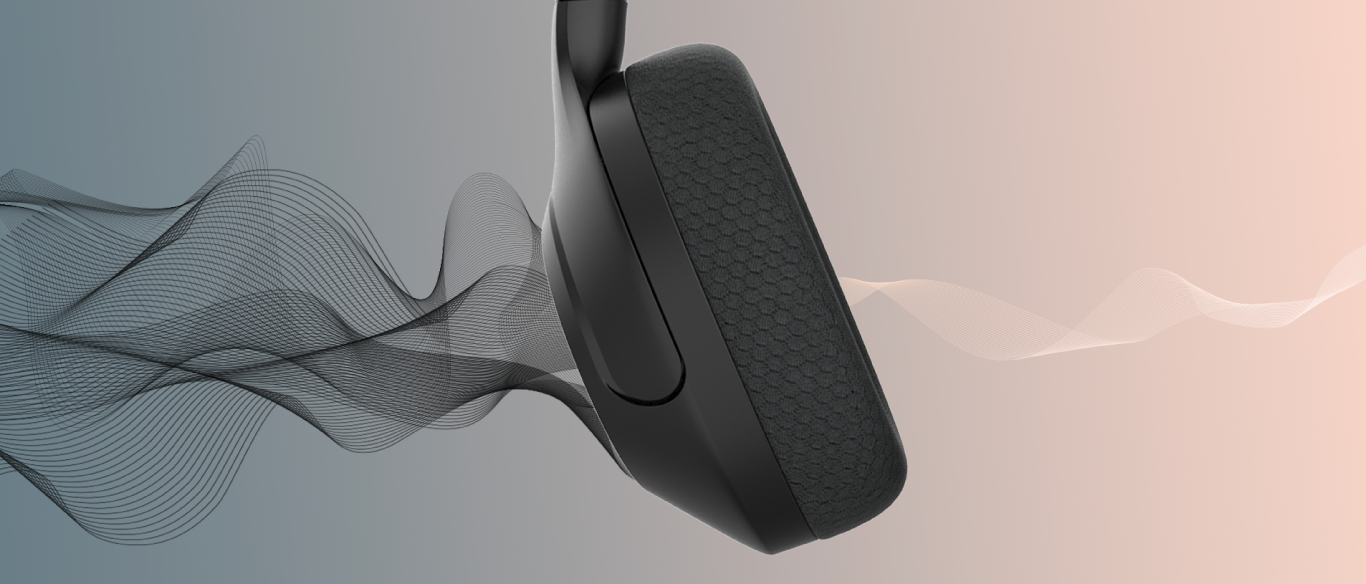What Is Noise-Cancelling Technology? How ANC Works in Modern Headphones
Dive into the science behind noise cancellation and discover how this technology is transforming your listening experience

Sport ANC TWS Earbuds Reflex Pro
In our increasingly noisy world, finding peace and quiet can seem like an impossible task. Whether you're commuting on a busy train, working in a crowded office, or trying to focus in a noisy café, unwanted sounds constantly compete for your attention. This is where Active Noise Cancellation (ANC) technology comes to the rescue, offering a bubble of tranquility in the midst of chaos.
As one of the most sought-after features in modern headphones, ANC has revolutionized how we experience audio. But what exactly is noise cancellation? How does it work? And why do some headphones seem to perform the magic trick of silencing the world better than others?
In this comprehensive guide, we'll explore the fascinating science behind noise-cancellation technology, break down the different types of ANC systems, and help you understand which environments each excels in. By the end, you'll have a deeper appreciation for the technology that's changing how we listen.
Table of contents |
The Science Behind Noise Cancellation
Before diving into ANC technology, it's helpful to understand some basic principles about sound. Sound travels in waves--alternating patterns of high and low pressure that move through the air. These waves have several properties:
- Amplitude – Loudness: The "height" of the wave, which determines how loud a sound is
- Frequency – Pitch: How many times the wave cycles per second (measured in Hertz), which determines pitch
- Phase – Timing Shift: The position of a point in time on a waveform cycle
The Key Principle: Destructive Interference
Active noise cancellation works on a deceptively simple principle called destructive interference. When two sound waves with the same amplitude but opposite phases meet, they cancel each other out, resulting in silence.
Think of it like adding +1 and -1--the result is zero. ANC headphones create an "anti-noise" wave that's the exact negative of incoming noise, effectively neutralizing it before it reaches your ears.

In practice, ANC headphones use tiny microphones to detect external sounds. These signals are processed by specialized electronics that instantly generate the inverse sound wave, which is then mixed with your audio or played into your ears. The result? The noise is significantly reduced, allowing you to hear your music more clearly at lower (and safer) volumes.
The Three Types of Active Noise Cancellation
Not all active noise cancellation systems are created equal. There are three primary ANC implementations, each with distinct advantages and ideal use cases.
Feedforward ANC
Feedback ANC
Hybrid ANC
Feedforward ANC (FF ANC): The Anticipator
Feedforward ANC systems place microphones on the outside of the headphones to monitor environmental noise. The system then generates inverse sound waves before the noise enters your ears.
Advantages
- Excellent at canceling high-frequency noise (like human voices)
- Can anticipate sounds before they reach your ear
- Works well in environments with sudden, variable noises
- Generally less expensive to implement
Limitations
- Vulnerable to wind noise (can mistake wind for noise)
- Less effective at canceling lower frequencies
- Cannot correct for the acoustic properties of your ear canal
- May introduce slight artifacts in audio
Best environments for Feedforward ANC: Offices with conversation, cafes, environments with variable high-pitched sounds.
Feedback ANC (FB ANC): The Listener
Feedback ANC systems place microphones inside the ear cup, right next to your ear. They monitor what you actually hear and make corrections in real-time.
Advantages
- Superior performance with low-frequency sounds (like engine rumble)
- Less susceptible to wind noise
- Adapts to how sound actually reaches your ears
- Can correct for variances in headphone fit
Limitations
- Limited frequency range (typically under 1kHz)
- Can't anticipate sounds--only reacts after they pass through
- Potential for feedback loops if not properly implemented
- May struggle with sudden, loud noises
Best environments for Feedback ANC: Airplanes, trains, cars, and environments with consistent low-frequency noise.
Hybrid ANC: The Best of Both Worlds
As the name suggests, Hybrid ANC combines both feedforward and feedback approaches by using microphones both outside and inside the ear cups. This creates a more comprehensive noise-cancellation system.
Advantages
- Broadest frequency coverage of all ANC types
- Can handle both high and low-frequency noise effectively
- Offers the most substantial reduction in overall noise
- More adaptive to different environments
Limitations
- More expensive to implement
- Higher power consumption (shorter battery life)
- More complex circuitry and processing required
- Still not perfect for all situations
Best environments for Hybrid ANC: Versatile for almost all environments, particularly beneficial for travelers who experience varied noise conditions.
ANC Performance Comparison
To help you better understand how each type of ANC performs in different environments, here's a comparative analysis:
| Noise Type | Feedforward ANC | Feedback ANC | Hybrid ANC |
|---|---|---|---|
| Airplane Engine | Moderate | Excellent | Excellent |
| Train/Subway Rumble | Fair | Very Good | Excellent |
| Office Chatter | Good | Poor | Very Good |
| Wind Noise | Poor | Good | Very Good |
| Sudden Loud Noises | Good | Poor | Good |
| Traffic Noise | Moderate | Good | Excellent |
| Air Conditioning/Fans | Fair | Excellent | Excellent |
ANC Performance by Frequency Range
Understanding which type of ANC works best for different frequency ranges can help you choose the right headphones for your needs:
- Low Frequencies (20-250Hz): Engine rumble, thunder, bass drums - Feedback ANC excels here
- Mid Frequencies (250-2000Hz): Human speech, most musical instruments - Hybrid ANC performs best
- High Frequencies (2000-20,000Hz): Whistles, high-pitched sounds - Feedforward ANC has an advantage
Making the Right Choice: Which ANC Type Is Best for You?
When shopping for noise-cancelling headphones, consider these factors to determine which ANC type would serve you best:
Primary Use Environment
- Frequent flyer: Prioritize feedback or hybrid ANC for consistent low-frequency engine noise
- Office worker: Consider feedforward or hybrid ANC to block conversations and office equipment
- Commuter: Hybrid ANC offers versatility for varied environments
- Outdoor enthusiast: Feedback or hybrid ANC will handle wind noise better
Additional Considerations
- Battery life: Hybrid systems typically consume more power
- Sound quality: Some ANC implementations can affect audio quality
- Comfort: Effective noise cancellation requires a good seal, so fit is crucial
- Price point: More sophisticated ANC typically comes at a higher cost
Conclusion: The Sound of Silence
Active Noise Cancellation technology has transformed how we experience audio in noisy environments. By understanding the different types of ANC--feedforward, feedback, and hybrid--you can make a more informed decision when purchasing your next pair of headphones.
The best ANC system for you depends on your specific needs and the environments where you'll most often use your headphones. While hybrid systems offer the most comprehensive noise cancellation, they may not be necessary if you primarily use your headphones in environments where a simpler system would suffice.
Whether you're looking to focus in a bustling cafe, find tranquility on a long flight, or simply enjoy your music without distractions, understanding ANC technology helps ensure that your next pair of headphones will deliver the silence you seek.



Share:
Solving the 5 Most Common Bluetooth Headphone Connection Problems